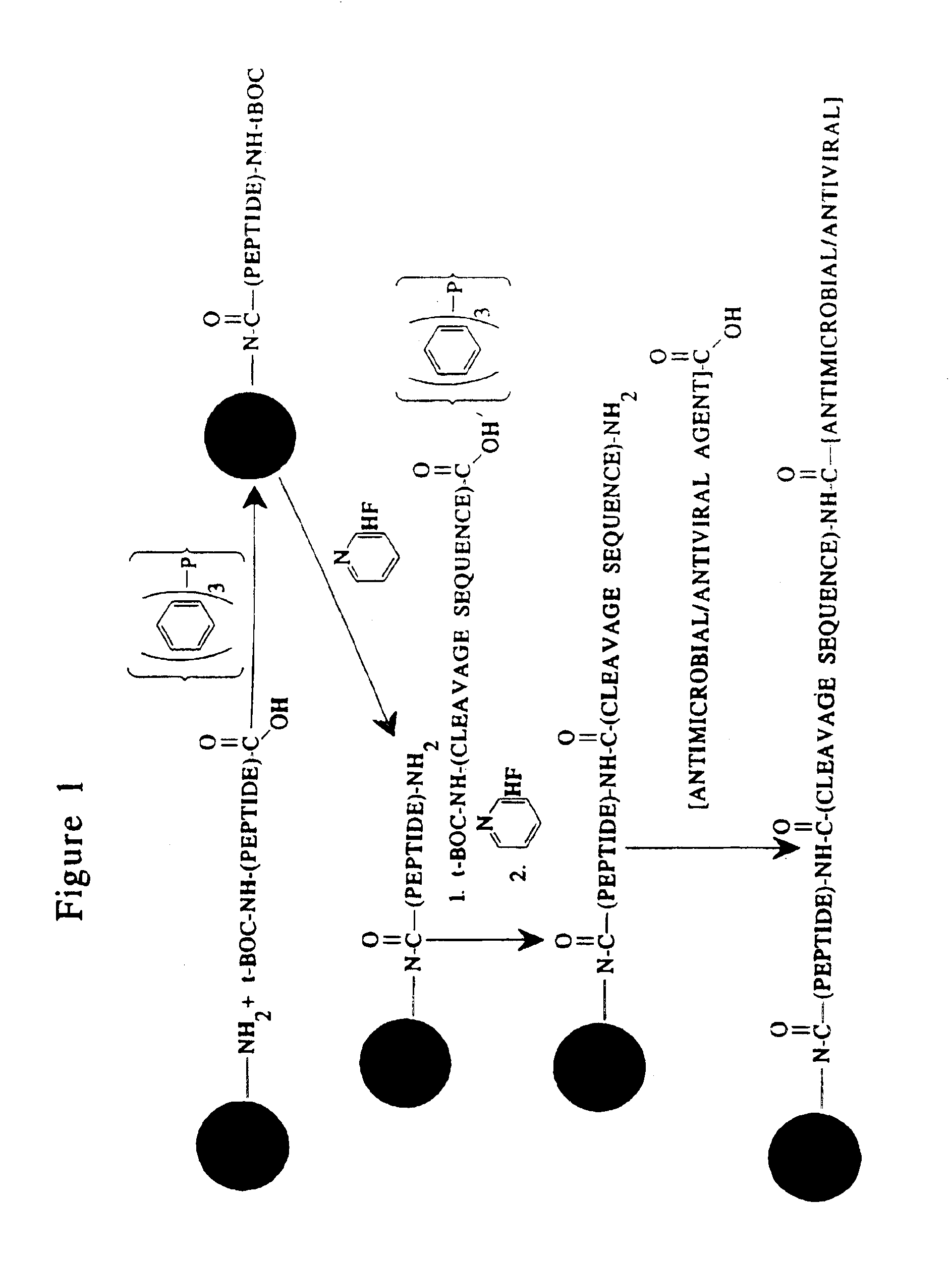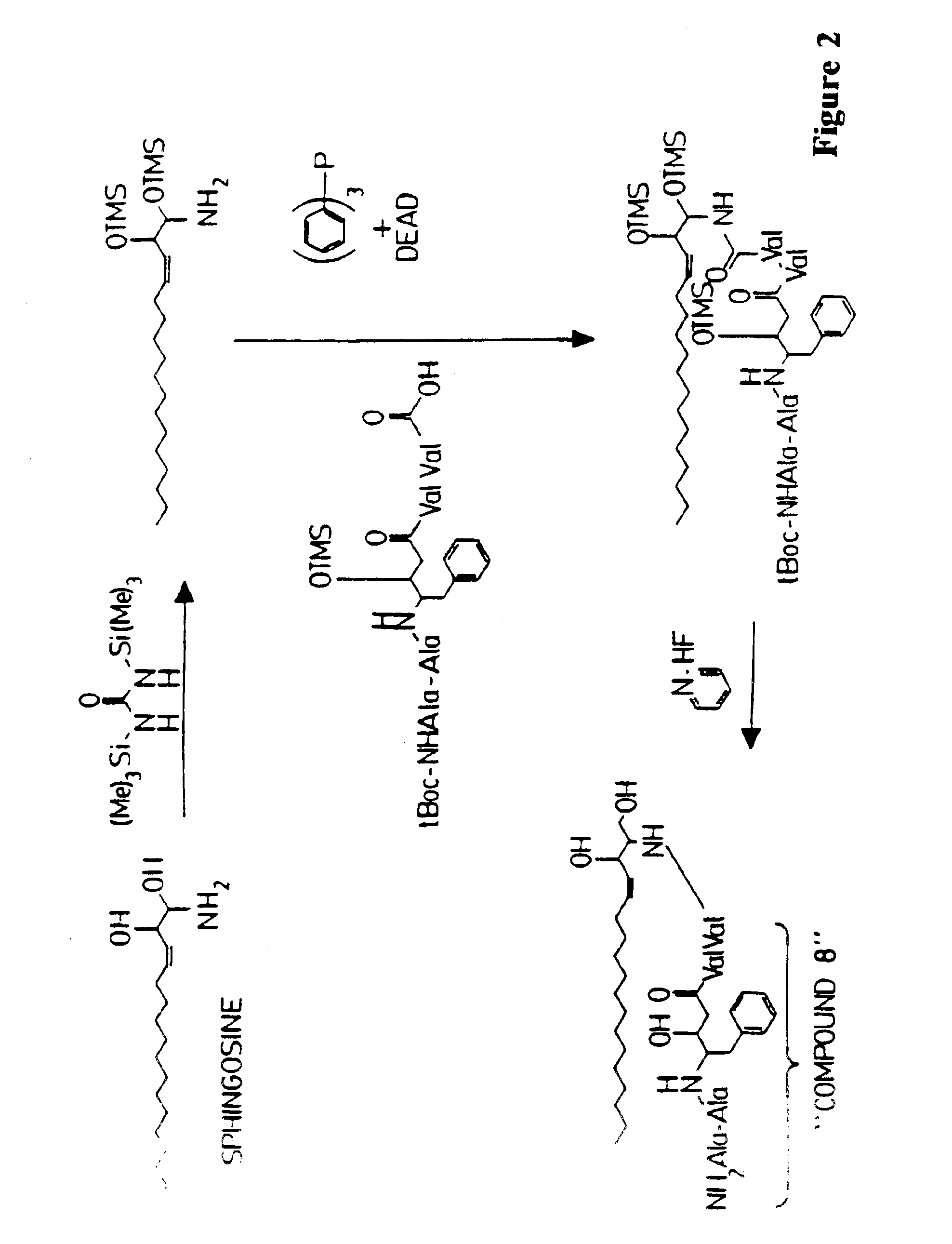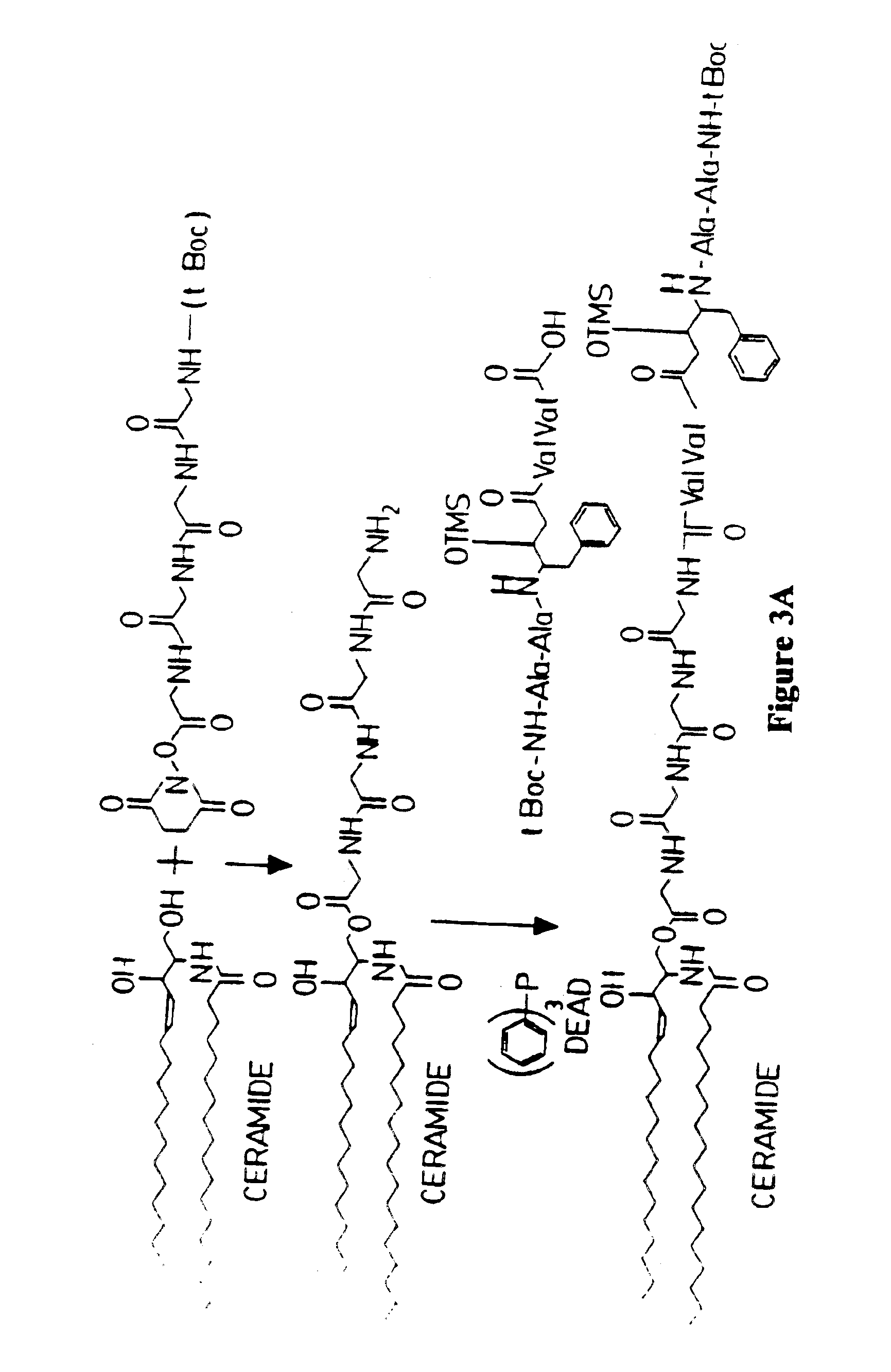Composition containing porous microparticle impregnated with biologically-active compound for treatment of infection
a technology of biologically active compound and porous microparticle, which is applied in the direction of immobilised enzymes, powder delivery, granular delivery, etc., can solve the problems of uncertain intracellular drug delivery efficacy, unfavorable drug delivery by ligand-receptor approach, and inability to meet the requirements of a single ligand-receptor approach
- Summary
- Abstract
- Description
- Claims
- Application Information
AI Technical Summary
Benefits of technology
Problems solved by technology
Method used
Image
Examples
example 1
[0172]An inactive, prodrug form of an antimicrobial agent is prepared by conjugating a nonspecifically cleavable peptide (i.e., one that will be cleaved in a phagocytic cell) to a derivatized microparticle as follows. An derivatized microparticle comprising unconjugated amino groups is reacted with a proteolytically-inert peptide in which the terminal amine and any of the constituent amino acid sidechain reactive amines are covered by tert-butoxycarbonyl (t-Boc) protecting groups in the presence of triphenyl phosphine as described by Kishimoto (1975, Chem. Phys. Lipids 15: 33-36). The peptide / microparticle conjugate is then reacted in the presence of pyridine hydrofluoride as described by Matsuura et al. (1976, J. Chem. Soc. Chem. Comm. xx: 451-459) to remove the t-Boc protecting groups. The peptide / microparticle is then conjugated to the non-specifically cleavable peptide, in which the terminal amine and any of the constituent amino acid sidechain reactive amines are covered by t-B...
example 2
[0173]An antiviral compound (HIV1 protease inhibitor; compound 8) is conjugated to sphingosine as follows. Sphingosine is reacted with 1,3 bis(trimethylsilyl)urea as described by Verbloom et al. (1981, Synthesis 1032: 807-809) to give a trimethylsilyl derivative of sphingosine. The sphingosine derivative is then conjugated with the antigenically-active peptide in which the terminal amine and any of the constituent amino acid sidechain reactive amines are covered by tert-butoxycarbonyl (t-Boc) protecting groups in the presence of diethylazo-dicarboxylate (DEAD) and triphenyl phosphine as described by Kishimoto (1975, Chem. Phys. Lipids 15: 33-36). The sphingosine / peptide conjugate is then reacted in the presence of pyridine hydrofluoride as described by Matsuura et al. (1976, J. Chem. Soc. Chem. Comm. xx: 451-459) to remove the t-Boc protecting group, to yield the antigenically-active peptide covalently linked to sphingosine through an amide bond. This reaction scheme is illustrated ...
example 3
[0174]An antiviral compound (compound 8) is conjugated to ceramide via a polyglycine linker as follows and as illustrated in FIG. 3. The amino terminus of polyglycine is protected by a t-Boc group. Polyglycine is conjugated through its carboxy terminus to ceramide forming an ester linkage, as described in Anderson et al., ibid. The resulting compound is then conjugated through the amino terminus of the polyglycine residue. The amino terminus of Compound 8 is also protected by a t-Boc protecting group. Conjugation with polyglycyl-sphingosine takes place between the amino terminus of the polyglycyl linker moiety and the carboxy terminus of the HIV-1 protease inhibitor. This reaction is carried out in the presence of DEAD and triphenyl phosphine as described in Examples 1 and 2. Following this conjugation, the amino terminus of the HIV-1 protease inhibitor residue is deprotected according to the method of Matsuura et al., ibid. Ceramide / drug conjugates are then linked to microparticles...
PUM
| Property | Measurement | Unit |
|---|---|---|
| diameter | aaaaa | aaaaa |
| polar | aaaaa | aaaaa |
| pharmaceutical composition | aaaaa | aaaaa |
Abstract
Description
Claims
Application Information
 Login to View More
Login to View More - R&D
- Intellectual Property
- Life Sciences
- Materials
- Tech Scout
- Unparalleled Data Quality
- Higher Quality Content
- 60% Fewer Hallucinations
Browse by: Latest US Patents, China's latest patents, Technical Efficacy Thesaurus, Application Domain, Technology Topic, Popular Technical Reports.
© 2025 PatSnap. All rights reserved.Legal|Privacy policy|Modern Slavery Act Transparency Statement|Sitemap|About US| Contact US: help@patsnap.com



